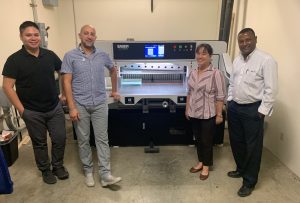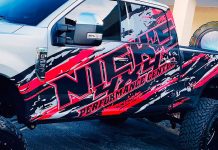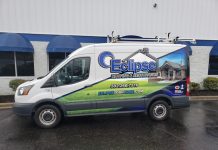 The digital in-plant at the Alameda County Sheriff’s Office in Dublin, California often operates at a frenzied pace, acknowledges Multimedia Services manager Dagnu Bezu. He knows because the county has experienced sizeable growth since he began working there over 30 years ago, including the last 11 in his present job. Occupying 739 square miles on the East side of San Francisco Bay, Alameda County today services more than 1.6 million people in multiple jurisdictions.
The digital in-plant at the Alameda County Sheriff’s Office in Dublin, California often operates at a frenzied pace, acknowledges Multimedia Services manager Dagnu Bezu. He knows because the county has experienced sizeable growth since he began working there over 30 years ago, including the last 11 in his present job. Occupying 739 square miles on the East side of San Francisco Bay, Alameda County today services more than 1.6 million people in multiple jurisdictions.
Handling various day-to-day needs for court houses, law enforcement, social services and even the Coroner’s Bureau in Oakland requires printing a lot of paperwork. When an aging, 45-inch SABER® paper cutter was ready for retirement earlier this year, Bezu turned to trusted adviser Steve Wilson at K. Wilson & Company. His recommendation? Downsize to Colter & Peterson’s new 37-inch SABER X-15, equipped with the latest Microcut electronics for faster productivity.
“The original SABER hasn’t been there as long as Dagnu, but we sold it new to the County when the shop was at a different location. It’s been 23 years since we installed it in 1996,” recalled Wilson, president of his family-owned dealership that has been a staple of the San Francisco community since 1972. The company’s relationship with Colter & Peterson, established in the mid-1980s, has been steadfast and factored heavily into the decision.
“Our old paper cutter had a computer problem. After sharing the repair costs with my bosses, we decided to buy a new machine and Steve helped us with the process,” said Bezu. “We checked everything online to see what was available. We were very happy with our first one so after the search was completed, Steve recommended we stay with the SABER and drop a size.”
That decision was based on the type of work the in-plant now produces. Bezu’s six employees run one shift five days a week and the SABER handles a boatload of work. All told, it will cut approximately 2.2 million impressions annually.
“We print everything on 12-by-18 inch parent sheets, then cut everything down from there,” said Bezu. He noted the black and white to color work ratio is about 85-15, and sometimes uses the SABER to cut printed signs, small banners, and different materials that require a sharp cut. That includes printed work on 23-by-35 inch craft paper sheets once a month.
“We do a ton of 3-by-5 inch cards, such as leave requests and overtime pay cards. We also print and cut 3-by-8 inch arrest and jail forms and medical requests. In addition to the Sheriff’s office, we also print all the business cards for the Probation office and do form printing for human resources and general services.”
Installed last June, the SABER handles work printed on a Ricoh C7110s 4-color press and Ricoh 8120s black and white unit; the latter will soon be replaced by a new Xerox press. Bezu’s wide format work is run through either a HP Z6100, HP Z6800, or a Roland SolJet PRO XR-640 press. Printing for a government agency means achieving specific requirements, and a double bevel feature on the SABER is giving him highly precise, 1/64th-inch cutting accuracy.
Accuracy is very important to us. I am very satisfied with the new machine’s performance,” said Bezu, mentioning how it keeps sheets tight and even so there are no registration problems. “I like everything about Microcut and the operators love it. The job recall is much faster and it’s saving them time to turn jobs. The touchscreen is also larger (12 inches wide) than our previous machine. The displays are more user friendly and very clear to read.”
Bezu acknowledges that updating equipment after using the same machine for 23 years has other advantages.
“Since the new SABER is only 37-inches, we are saving some floor space,” sums up Bezu. “But two things you notice right away is it’s safer and makes less noise. It’s very quiet and if it wasn’t for the air compressor, you wouldn’t know that it was even running.”










